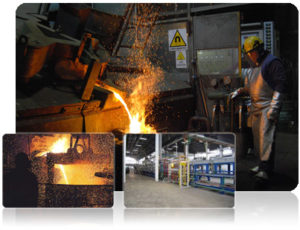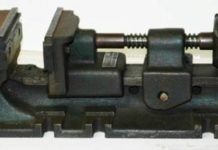Production of Metal Powders
Metallic powders possessing different properties can be produced easily. The most commonly used powders are copper-base and iron-base materials. But titanium, chromium, nickel, and stainless steel metal powders are also used. In the majority of powders, the size of the particle varies from several microns to 0.5 mm. The most common particle size of powders falls into a range of 10 to 40 microns. The chemical and physical properties of metals depend upon the size and shape of the powder particles. There are various methods of manufacturing powders.The commonly used powder making processes are given as under.
1. Atomization
2. Chemical reduction
3. Electrolytic process
4. Crushing
5. Milling
6. Condensation of metal vapors
7. Hydride and carbonyl processes.
The above mentioned metallic powder making techniques are discussed briefly as under.
1. Atomization
In this process, the molten metal is forced through an orifice and as it emerges, a high pressure stream of gas or liquid impinges on it causing it to atomize into fine particles. The inert gas is then employed in order to improve the purity of the powder. It is used mostly for low melting point metals such as tin, zinc, lead, aluminium, cadmium etc., because of the corrosive action of the metal on the orifice (or nozzle) at high temperatures. Alloy powders are also produced by this method.
2. Chemical Reduction Process
In this process, the compounds of metals such as iron oxides are reduced with CO or H2 at temperatures below the melting point of the metal in an atmosphere controlled furnace. The reduced product is then crushed and ground. Iron powder is produced in this way
Fe3O4 + 4C = 3Fe + 4CO
Fe3O4 + 4CO = 3Fe + 4CO2
Copper powder is also produced by the same procedure by heating copper oxide in a stream of hydrogen.
Cu2 + H2 = 2Cu + H2O
Powders of W, Mo, Ni and CO can easily be produced or manufactured by reduction process because it is convenient, economical and flexible technique and perhaps the largest volume of metallurgy powders is made by the process of oxide reduction.
3. Electrolytic Process
Electrolysis process is quite similar to electroplating and is principally employed for the production of extremely pure, powders of copper and iron. For making copper powder, copper plates are placed as anodes in a tank of electrolyte, whereas, aluminium plates are placed in to the electrolyte to act as cathodes. High amperage produces a powdery deposit of anode metal on the cathodes. After a definite time period, the cathode plates are taken out from the tank, rinsed to remove electrolyte and are then dried. The copper deposited on the cathode plates is then scraped off and pulverized to produce copper powder of the desired grain size.
The electrolytic powder is quite resistant to oxidation.
4. Crushing Process
The crushing process requires equipments such as stamps, crushers or gyratory crushes. Various ferrous and non-ferrous alloys can be heat-treated in order to obtain a sufficiently brittle material which can be easily crushed into powder form.
5. Milling Process
The milling process is commonly used for production of metallic powder. It is carried out by using equipments such as ball mill, impact mill, eddy mill, disk mill, vortex mill, etc. Milling and grinding process can easily be employed for brittle, tougher, malleable, ductile and harder metals to pulverize them. A ball mill is a horizontal barrel shaped container holding a quantity of balls, which, being free to tumble about as the container rotates, crush and abrade any powder particles that are introduced into the container. Generally, a large mass to be powdered, first of all, goes through heavy crushing machines, then through crushing rolls and finally through a ball mill to produce successively finer grades of powder.
6. Condensation of Metal Powders
This process can be applied in case of metals, such as Zn, Cd and Mg, which can be boiled and the vapors are condensed in a powder form. Generally a rod of metal say Zn is fed into a high temperature flame and vaporized droplets of metal are then allowed to condense on to a cool surface of a material to which they will not adhere. This method is not highly suitable for large scale production of powder.
7. Hydride and Carbonyl Processes
High hardness oriented metals such as tantalum, niobium and zirconium are made to combine with hydrogen form hydrides that are stable at room temperature, but to begin to dissociate into hydrogen and the pure metal when heated to about 350°C. Similarly nickel and iron can be made to combine with CO to form volatile carbonyls. The carbonyl vapor is then decomposed in a cooled chamber so that almost spherical particles of very pure metals are deposited. Source Introduction of Basic Manufacturing Processes and Workshop Technology by Rajender Singh.














